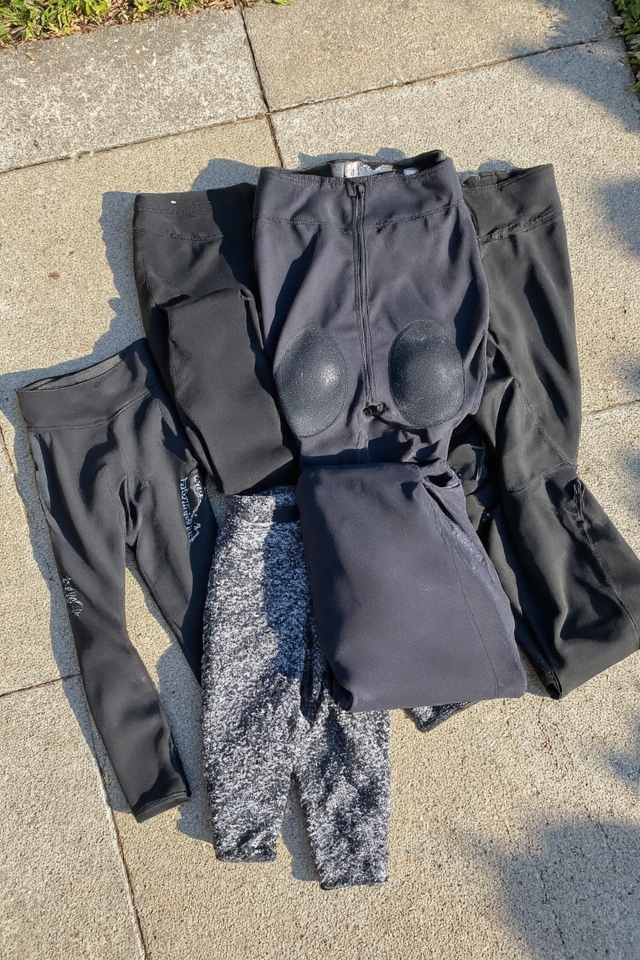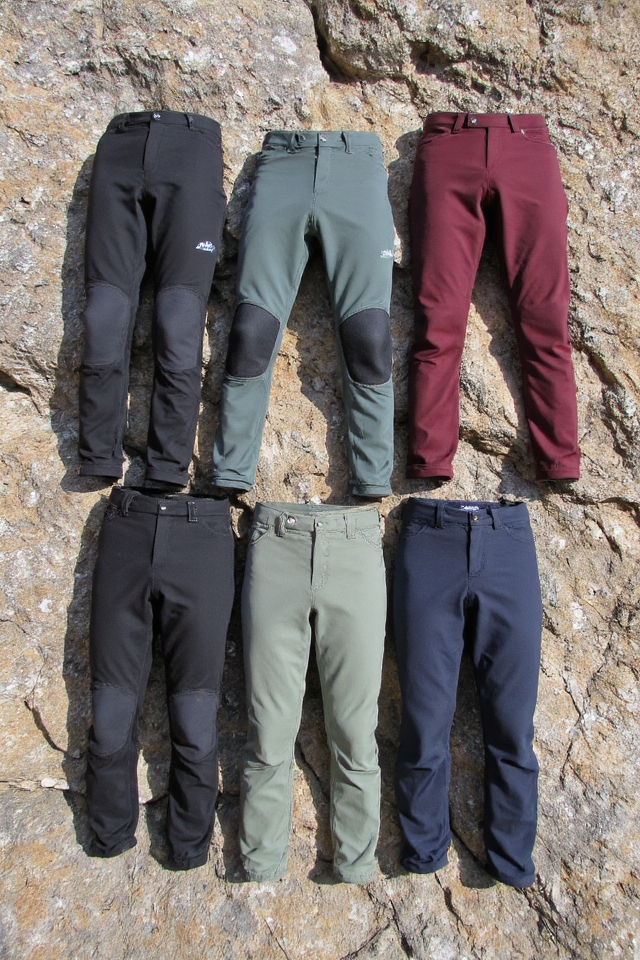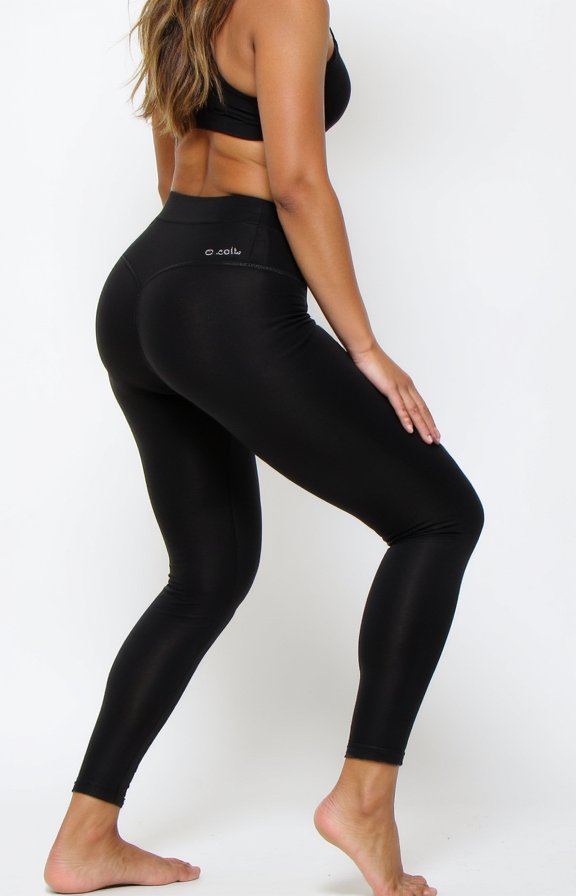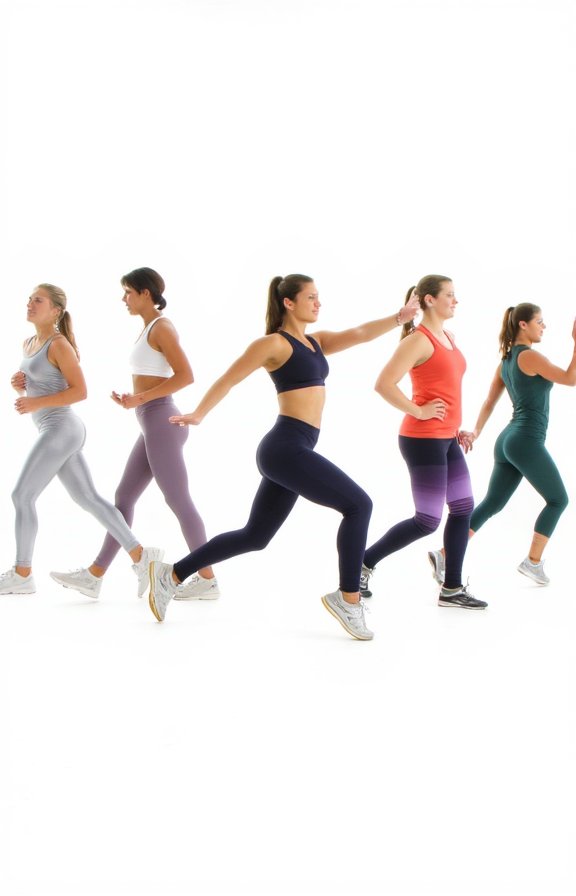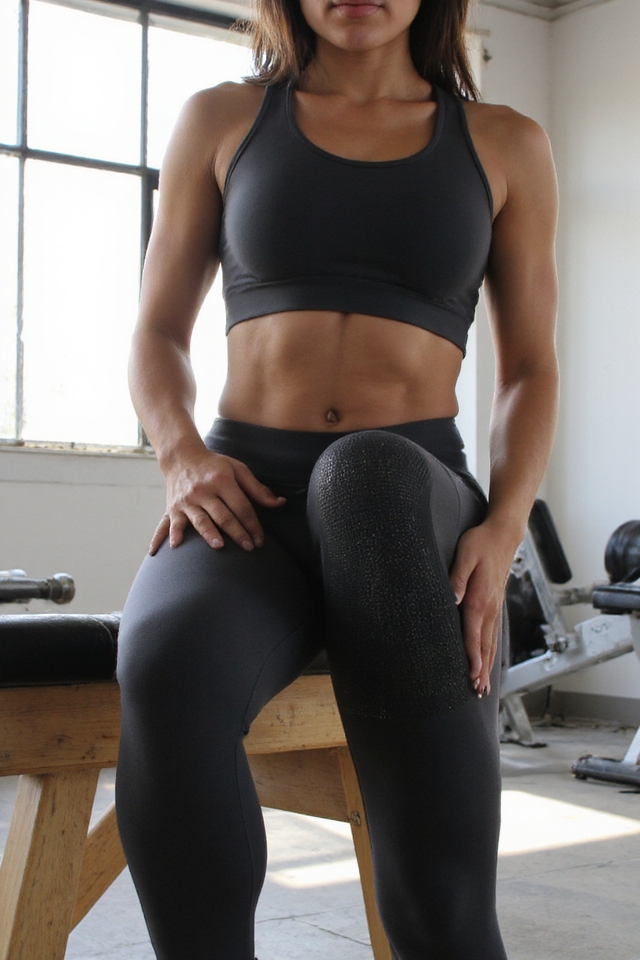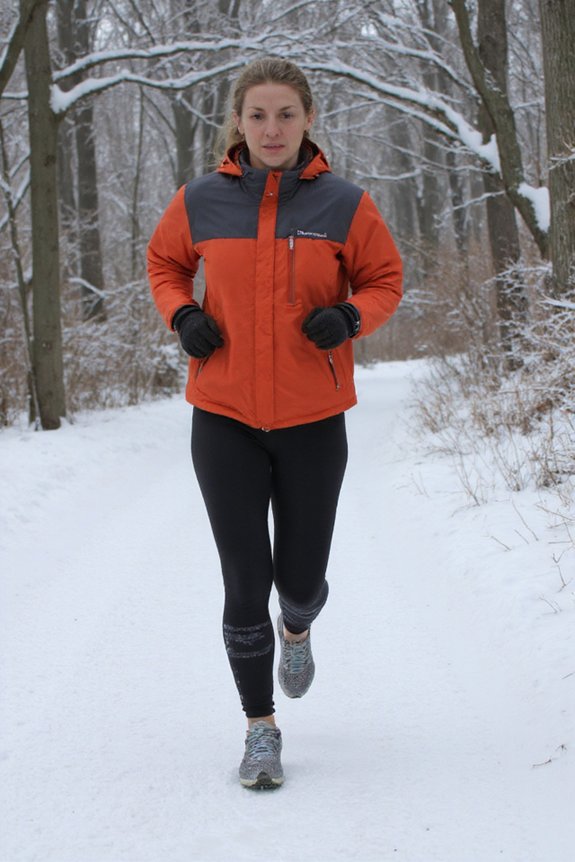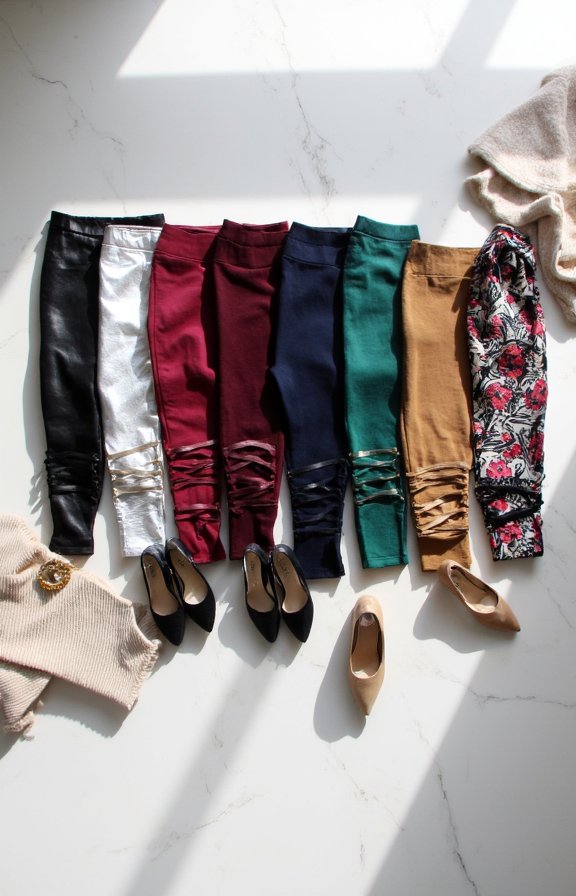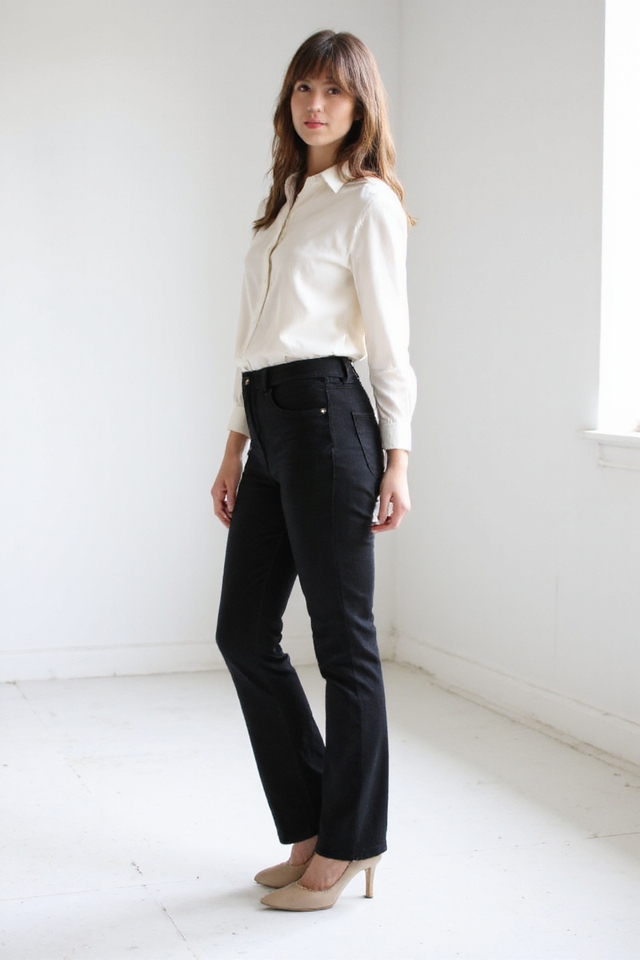You’ll need specialized cycling tights that can handle rain, wind, and freezing temperatures when you’re riding through harsh weather conditions. Water-resistant bib tights with DWR coating shed moisture while fleece-lined insulated options provide serious warmth against cold winds. Four-way stretch tights with mesh panels offer breathability for intense rides, while reflective bib designs keep you visible after dark. Eco-friendly versions made from recycled materials deliver the same performance benefits. Each type tackles specific weather challenges cyclists face.
Water-Resistant Bib Tights
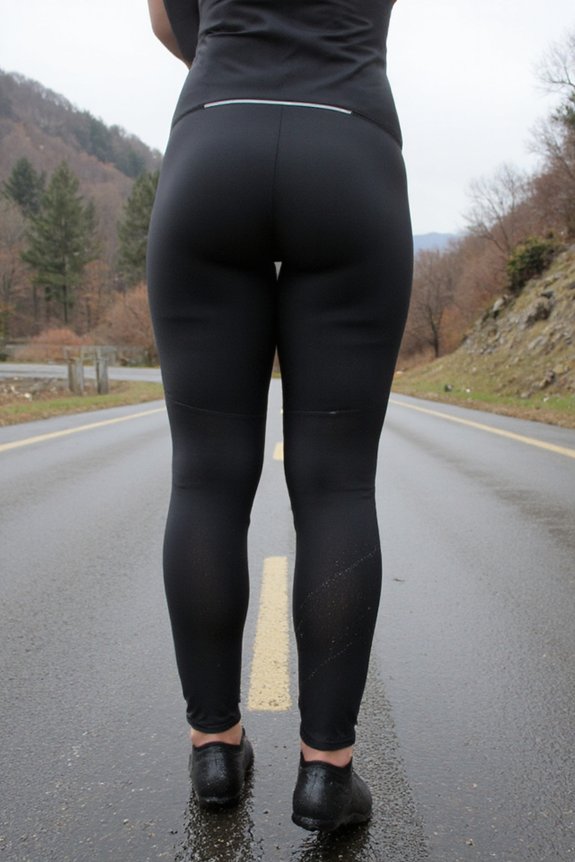
When you’re cycling through unpredictable weather, water-resistant bib tights become your best friend on the road.
These sleek performers feature DWR-coated fabrics that’ll shed light rain and road spray while maintaining breathability.
You’ll appreciate the full-coverage bib design that eliminates waistband pressure and stays perfectly in place during aggressive rides.
The thermal fleece lining keeps your muscles warm without adding bulk.
Insulated Cycling Tights

For those bone-chilling winter rides, you’ll need the serious warmth that insulated cycling tights deliver.
These game-changers feature fleece-lined interiors, windproof front panels, and thermal fabrics that trap body heat.
You’ll appreciate the brushed inner surface against your skin, strategic ventilation zones, and reinforced knee areas.
They’re perfect with thermal base layers underneath and windbreakers on top for maximum protection.
Stretchy and Breathable Tights

While you’re looking for maximum performance without feeling restricted, stretchy and breathable tights become your cycling necessity.
These moisture-wicking champions move with every pedal stroke, featuring four-way stretch fabric that won’t bind or bunch.
You’ll appreciate the mesh panels strategically placed along thighs and calves for ventilation.
Choose pairs with flatlock seams to prevent chafing, and you’re ready to conquer any distance comfortably.
Reflective Bib Tights
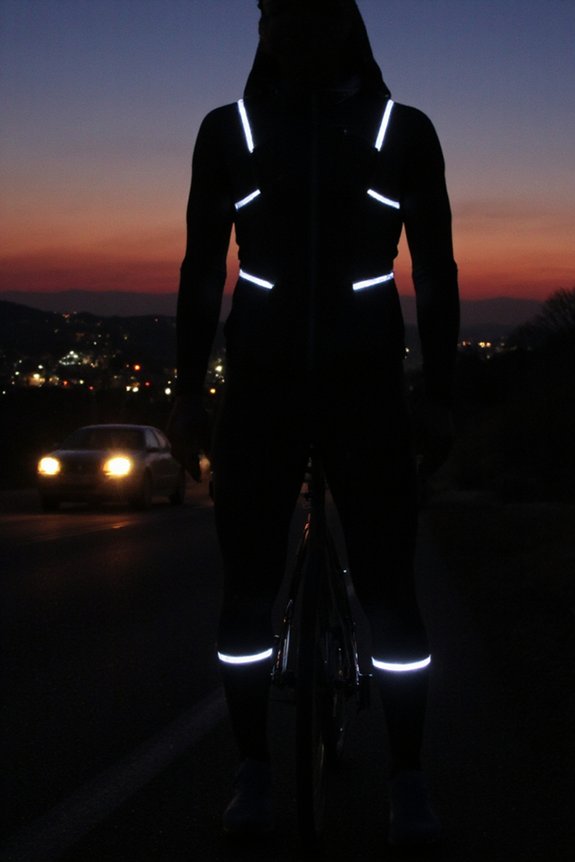
Once daylight fades and you’re still pedaling, reflective bib tights become your safety necessity.
These specialized leggings feature strategically placed reflective strips that catch headlights, making you visible from every angle.
The bib design eliminates waistband pressure, while the shoulder straps keep everything perfectly in place during intense rides.
You’ll appreciate the thermal protection and full coverage when temperatures drop after sunset.
Eco-Friendly and Recycled Tights
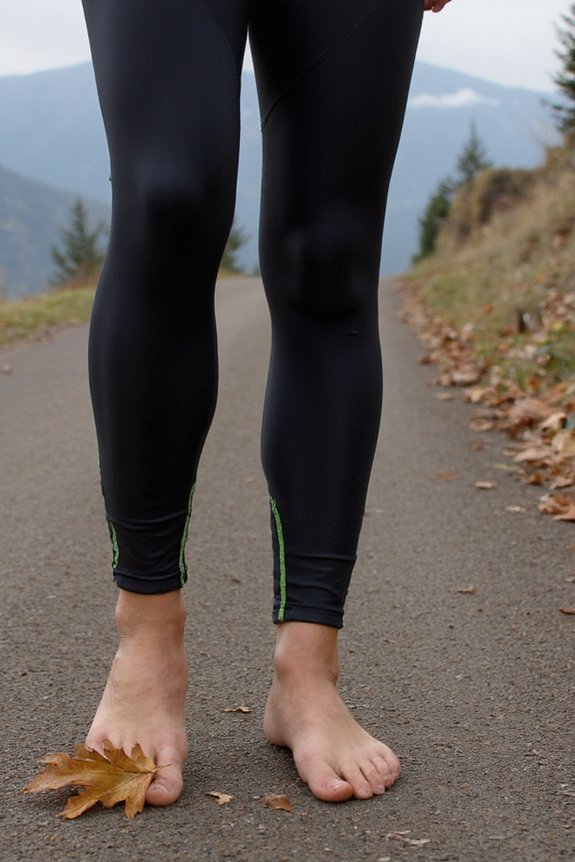
Beyond visibility and performance, today’s cyclists are choosing tights that protect both their bodies and the planet.
You’ll find innovative brands crafting cycling tights from recycled ocean plastics, regenerated nylon, and organic cotton blends.
These sustainable options deliver the same moisture-wicking, compression benefits you expect, while reducing environmental impact.
Look for certifications like bluesign® or Global Recycled Standard when shopping for eco-conscious cycling gear.
Frequently Asked Questions
How Do I Properly Care for and Wash Cycling Leggings?
You’ll want to wash your cycling leggings inside out in cold water on a gentle cycle.
Skip the fabric softener—it’ll damage the moisture-wicking fibers. Use a mild detergent, preferably one made for athletic wear.
Never put them in the dryer; the heat breaks down the elastane. Instead, lay them flat or hang them to air dry.
Quick tip: rinse immediately after rides to prevent odor buildup.
What’s the Ideal Temperature Range for Each Type of Cycling Tight?
You’ll want fleece-lined tights when it’s below 40°F. They’re perfect for those frigid morning rides.
Standard thermal tights work beautifully between 40-55°F, keeping muscles warm without overheating.
For 55-65°F days, grab your lightweight compression tights that breathe well.
Above 65°F? Switch to shorts or ultra-light tights with mesh panels.
How Long Do Quality Cycling Leggings Typically Last With Regular Use?
You’ll get about two to three years from quality cycling leggings with regular use.
If you’re riding three to four times weekly, expect the chamois padding to compress and fabrics to thin after 18-24 months.
Premium brands with reinforced seams and durable Lycra blends last longer.
You’ll know it’s replacement time when the fabric becomes sheer, seams start fraying, or the chamois loses its cushioning support during rides.
Should I Wear Underwear Beneath Cycling Bib Tights?
You shouldn’t wear regular underwear beneath cycling bib tights.
They’re designed with built-in chamois padding that works best against bare skin.
Traditional underwear creates uncomfortable bunching, chafing, and defeats the moisture-wicking properties you need.
The seamless design prevents irritation during long rides.
If you’re uncomfortable going commando, invest in specific cycling underwear made from technical fabrics.
Trust me, once you experience the difference, you’ll never go back to regular underwear.
What’s the Difference Between Men’s and Women’s Cycling Leggings?
You’ll notice men’s and women’s cycling leggings differ in several key ways.
Women’s styles feature wider hips, a higher waist, and specific padding designed for female anatomy.
Men’s versions have a straighter cut, lower rise, and male-specific chamois placement.
The inseam lengths vary too – women’s typically run shorter.
Both use the same performance fabrics, but the fit’s completely different.
Choose based on your body type for ideal comfort and performance.
